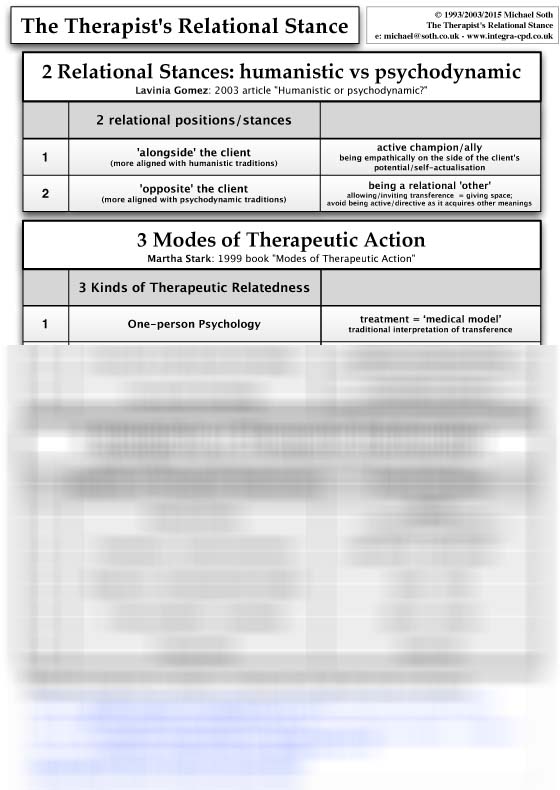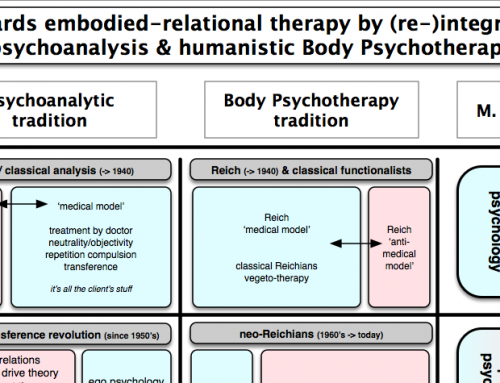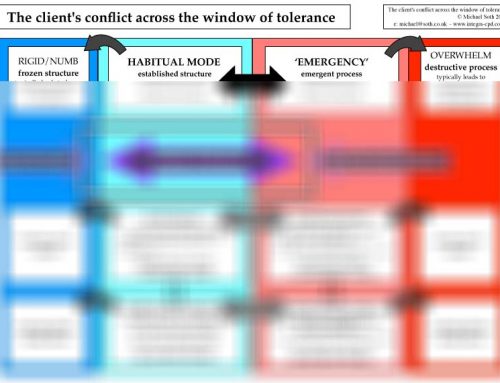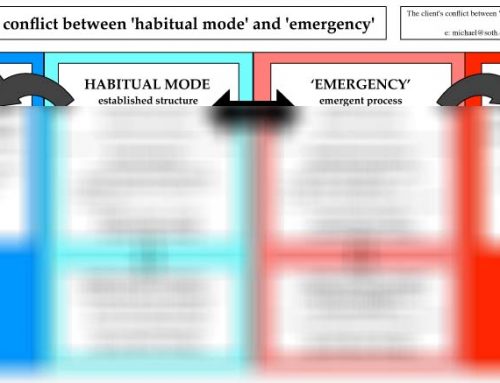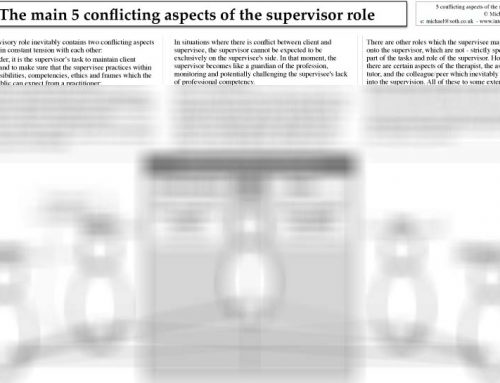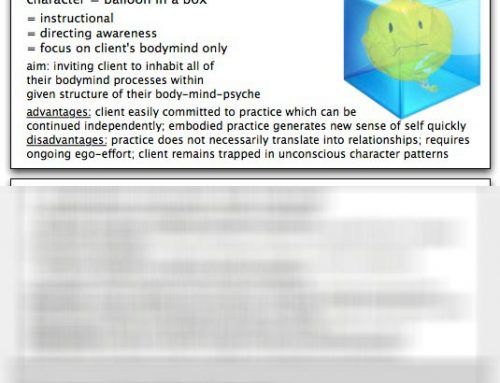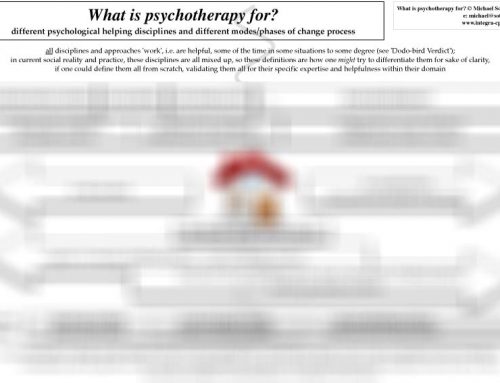Project Description
This handout is a summary of three useful and mutually complementary formulations/models, which help us understand the therapist's relational stance. A good starting point for naming and describing relational stances is Lavinia Gomez’s (2003) distinction between being ‘alongside’ the client (typically championed by humanistic approaches) versus relating from a stance which is ‘opposite’ the client (as typically modelled by the psychodynamic tradition). Another is Martha Stark’s (1999) notion of different kinds of therapeutic relatedness (one-person, one-and-a-half-person, two-person psychologies). A more differentiated model is Petruska Clarkson’s (1994) idea of relational modalities (working alliance, reparative, authentic, transference-countertransference), especially when phrased as kinship metaphors (i.e. what would be the closest equivalent to the therapist’s relational stance in an extended could sleep family, e.g. cousin, step-parent, parent, etc). See other handouts for how I have tried to integrate and develop these ideas into my 'Diamond Model' of relational modalities.
To gain access to the full resource, please log-in if you are a member already (and then re-fresh this page after log-in), or to become a member of the site register here (it's free).

